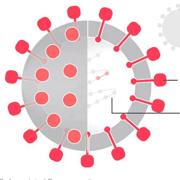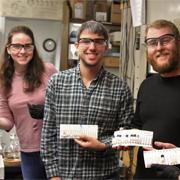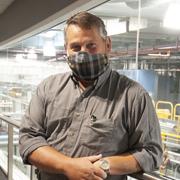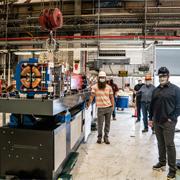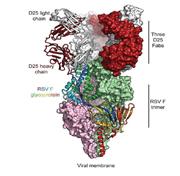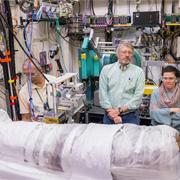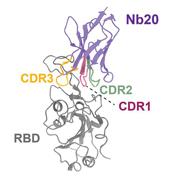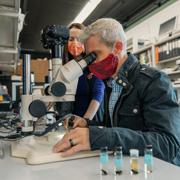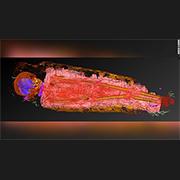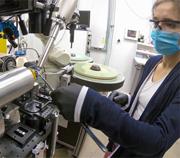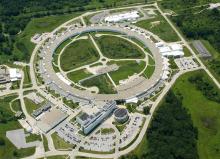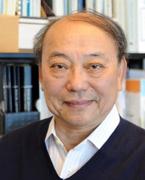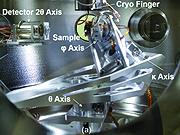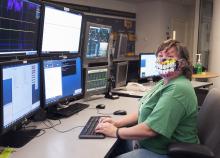News Feed - APS/User News
On January 11, 2021, Argonne National Laboratory Deputy Laboratory Director for Science and Technology and Interim APS Director Stephen Streiffer joined John Williams to explain how our understanding and response to COVID-19 has moved forward so quickly, at the one-year anniversary of the SARS-CoV-2 genome release. And he shares insight into new strains of the coronavirus.
Graduate students at universities in North America are invited to apply to attend the 23rd National School on Neutron and X-ray Scattering, which will be held virtually at the U.S. Department of Energy's Argonne and Oak Ridge national laboratories from July 12 - 30, 2021. This school is designed to introduce students to the capabilities available at U.S. neutron and x-ray user facilities.
It’s 4 a.m. A loud alarm is blaring, accompanied by red strobe lights flashing. A stern voice announces, “Searching station B. Exit immediately.” It feels like an emergency, but it’s not. In fact, the alarm has already gone off 60 or 70 times today. It is a warning, letting everyone in the vicinity know I’m about to blast a high-powered X-ray beam [from the U.S. Department of Energy's Advanced Photon Source at Argonne National Laboratory] into a small room full of electronic equipment and plumes of vaporizing liquid nitrogen.
Safety in an environment like the one found at the Advanced Photon Source (APS) in the Argonne National Laboratory Photon Sciences Directorate (PSC) is an exacting science in the best of times. Mix in a pandemic such as the one we’re living through now and the degree of difficulty skyrockets. The safety experts assigned to PSC from the Argonne Environment, Safety, Health & Quality (ESHQ) Directorate are tasked with keeping staff, visiting researchers, and visitors of any kind safe. Meet the ESHQ/PSC safety team.
Jason Carter’s job, like many on the Advanced Photon Source (APS) Upgrade project, is about to get exciting. Carter is the lead vacuum engineer for the project, and after six years of designing and planning, his team is now preparing to actually build the complex vacuum system that will contain the powerful electron beam generated by the APS, a Department of Energy (DOE) Office of Science User Facility at Argonne National Laboratory. He’s excited, he says, to get out from behind the computer and start bringing his team’s part of the upgrade to life.
If you ever built a complex model out of LEGOs, you know the value of assembling parts of that model in pieces before attaching them to the whole. That same strategy is being used to upgrade the electron storage ring at the heart of the Advanced Photon Source, a U.S. Department of Energy Office of Science User Facility at Argonne National Laboratory.
More than a decade of virus research at the APS laid the groundwork for more effective COVID-19 vaccines and helped speed their rapid development.
Researchers from Northwestern University and the U.S. Department of Energy's (DOE's) Argonne National Laboratory used a new x-ray technique at the DOE's Advanced Photon Source to study the remains of a 1,900-year-old Egyptian girl — all without unraveling or damaging the mummy.
The APS has been a powerful tool in the battle against the novel coronavirus, contributing more information about the structure of the virus to the International Protein Databank than any other light source in the United States. The 100th structure (pictured) was determined at the National Institute of General Medical Sciences and National Cancer Institute structural biology facility 23-ID x-ray beamline at the U.S. Department of Energy's APS.
People of the APS Upgrade: This series of profiles focuses on the people behind the APS Upgrade. First up: Deputy Project Manager Elmie Peoples-Evans.
Two researchers from Virginia Tech, using the U.S. Department of Energy’s Advanced Photon Source and the Virginia Tech Nanoscale Characterization and Fabrication Lab, are seeking answers to questions about insects’ breathing, which may lead to new applications in microfluidics.
Scientists have pioneered a new technique that allows them to investigate the insides of a 1,900-year-old mummy -- without having to open up and tamper with the ancient artifact. Researchers used a new combination of CT (computed tomography) technology and X-ray diffraction to reveal clues about a Roman-era Egyptian mummy, which was discovered in Hawara, Egypt.
An innovative collaboration between computer and computational scientists from the Data Science and Learning Division and Advanced Photon Source at Argonne, and the Electrical and Computer Engineering department at the University of Illinois at Urbana-Champaign has garnered the Best Paper Award at the SC20 virtual conference.
In 1995, the U.S. Department of Energy’s Advanced Photon Source (APS) at Argonne National Laboratory observed the 100th anniversary of Wilhelm Conrad Röntgen's seminal discovery of the x-ray by producing first light from the APS x-ray source, and by holding an informal ceremony, “20 Years of Light at the APS.” Now, 2020 marks the 125th anniversary of the discovery of the x-ray (and the 175th birthday of Röntgen).
Argonne scientists, working at the Advanced Photon Source as part of a national consortium of structural genomics experts, have greatly increased our knowledge of the virus that causes COVID-19.
Research teams from across the United States are making use of the Advanced Photon Source’s remote access capabilities to better understand the virus that causes COVID-19, and to move forward on treatments and vaccines to combat it.
Michael J. Wojcik, a physicist with the X-ray Science Division Optics Group at the U.S. Department of Energy’s Advanced Photon Source, is a co-winner of a 2020 R&D 100 Award for the X-ray Polarizing Beam Splitter.
Deming Shu, Senior Engineer for High Precision Instrumentation in the X-ray Science Division at the U.S. Department of Energy’s Advanced Photon Source has been named an Argonne Distinguished Fellow upon unanimous recommendation by the Argonne Laboratory Director’s Oversight Council for Hiring and Promotions.
An ultra-high vacuum, non-magnetic kappa geometry diffractometer has been designed and commissioned for the resonant soft x-ray scattering branch of the X-ray Science Division Intermediate Energy X-ray beamline 29-ID at the Advanced Photon Source. There were three main design goals for this diffractometer: kappa geometry, non-magnetic, and high-precision.
Someone has to drive this machine, especially when it’s travelling at nearly the speed of light. Meet (most of) the Main Control Room operators who are part of the Accelerator Systems Division in the Advanced Photon Source at the U.S. Department of Energy’s Argonne National Laboratory.

